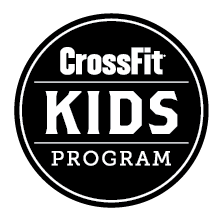9
Jul / 13
Paleo on a Budget Revisited
posted by: Ruth
One of the common themes I hear during the Whole 30 or anyone eating clean is what happens to their grocery bill. I have to admit, seeing 12 giant muffins at Costco retailing for $4.99 is pretty hard to beat price-wise, as is the fast food 99 cent specials, but there is a way to eat clean and not break the bank. We’ve linked to Whole 9′s guide to shopping on a budget before. Paleo Parents also posted a good article about meal planning where she fed 5 people for 17 days on a $4.98/day budget.
Chris Kresser recently also posted 7 Tips for Healthy Eating and it does a great job breaking down how to cut costs while still eating clean. I’ve summed up his points below, but click here to read the article in its entirety.
1. Buy Ingredients, Not Products
Oh My Bars, Primal Pacs, Brian’s Bowls, Lara Bars, Coconut Water, etc are all great when you’re in a bind, but you are paying for the simplicity and convenience of these packaged foods. If you are on a budget, carve out time to make your own paleo snacks and meals and bring them with you every day.
2. Share Your Food
Find local CSA’s and cow-pools or find a group of like-minded people (like your fellow gym rats) to go in on a bulk buy. If you’re interested in bulk coconut, coconut aminos, beef (J&J), etc post to comments and I’ll send you more info.
3. Get Down to Basics
Find what works and stick with it. We have a tub of coconut oil from Tropical Traditions, our go-to spices (garlic, salt/pepper, red pepper flakes, and chili powder) and it can be mixed and matched to make tons of dishes. Frozen veggies, sweet potatoes, and sometimes rice (post W30) are inexpensive options.
4. Cook in Bulk
‘Nuff said.
5. Pick Your Battles
Here is where you’ll make the most difference. Do you have to buy only organic, local, pastured, grass-fed, raw food? Is it ideal? Yes. Is it necessary? No. Kresser says to check out a list called The Dirty Dozen which “describes the twelve most contaminated fruits and vegetables on the market, as well as the twelve least contaminated.”
While you always want to buy organic celery and strawberries, it might not be so important to look for organic onions or bananas. The same goes for animal products. While you would likely want to avoid conventionally-raised chicken, pork, and organ meats, you may be alright buying lamb, eggs, and some natural cheeses that aren’t from 100% grass-fed and organic sources. Canned fish like salmon, skipjack tuna, sardines, and herring are far less expensive than fresh, wild fish, and are extremely nutrient dense choices. Of course, you should always get the highest quality animal foods you can afford, but not everyone has access to ideal sources of meat. It’s better to eat non-organic eggs than organic cereal for breakfast, and it’s better to have a dinner of a filet of farmed trout and conventional salad than a plate of organic pasta and wild striped bass. (In fact, some wild fish are even more contaminated than farmed ones.) If you’re unable to buy the best quality meats and produce, it’s a good idea to do your homework and figure out which items are worth the splurge, and which might be alright to spend less money on.
6. Cut Out the Extras
Yes, brew your own coffee, skip the infused EVOO/vinegars (make your own), fancy marinades, Lululemon clothing (gasp), and any other unnecessary frills. What you feed your body is more important than what is on it or what it does on a Saturday night. Take inventory of what is “extra” in your life and make the necessary cuts.
7. Skip the Filet Mignon
For the budget minded, buy the cuts of meat that are on sale. Skip the fancy cuts and opt for versatile cuts (good for steaks, stir fry, broiling, etc). We buy most of our meat on Fridays and get whatever is on sale at Whole Foods. When we first started, though, we bought most of it from Trader Joes and Costco. Do what works for you and as long as you prioritize your nutrition, you’ll be on the right track.
Keep fine tuning your grocery shopping tactics and you’ll find it’s possible to eat clean on a reasonable budget. Post your tips to comments!
WOD 07.09.13
Back Squat 3×5 or Wendler
Partner WOD
4 Rounds of 30 Seconds On / 30 Seconds Off
Wallball Shots
Ball Slams
Double Unders
One partner works while the other one rests. Each partner performs 4 rounds of each movement before moving on to the next one.


 310.465.6565 |
310.465.6565 |


























2 Responses to “Paleo on a Budget Revisited”
Justin
July 9, 2013 at 7:24 AM
Hello Ruth, good article. I’ve recently been thinking about this very subject and I am interested in the Food Sharing information you mentioned.
Thanks.
Michael H
July 9, 2013 at 12:15 PM
Did anyone else sign up for the ROC race this Saturday?